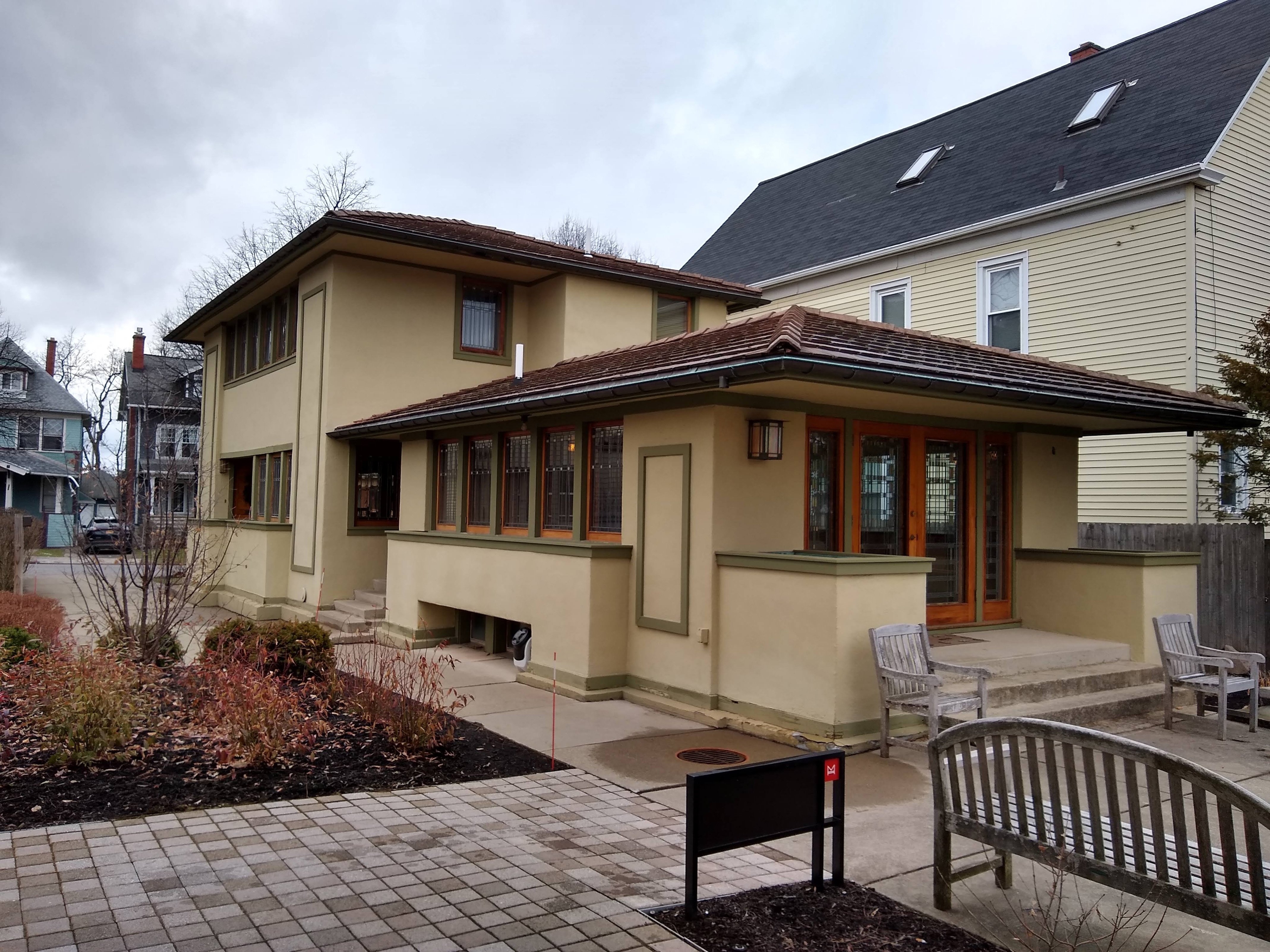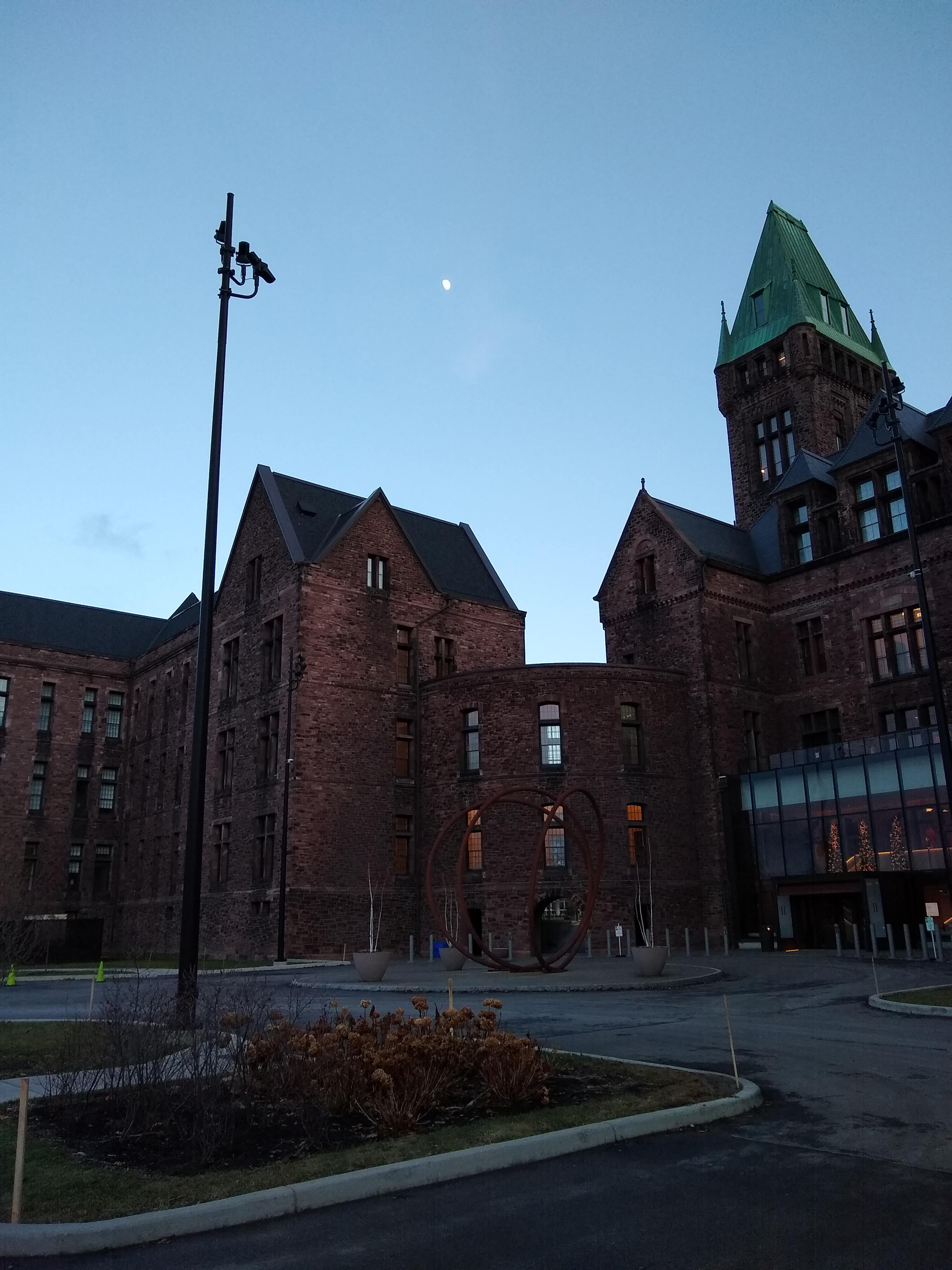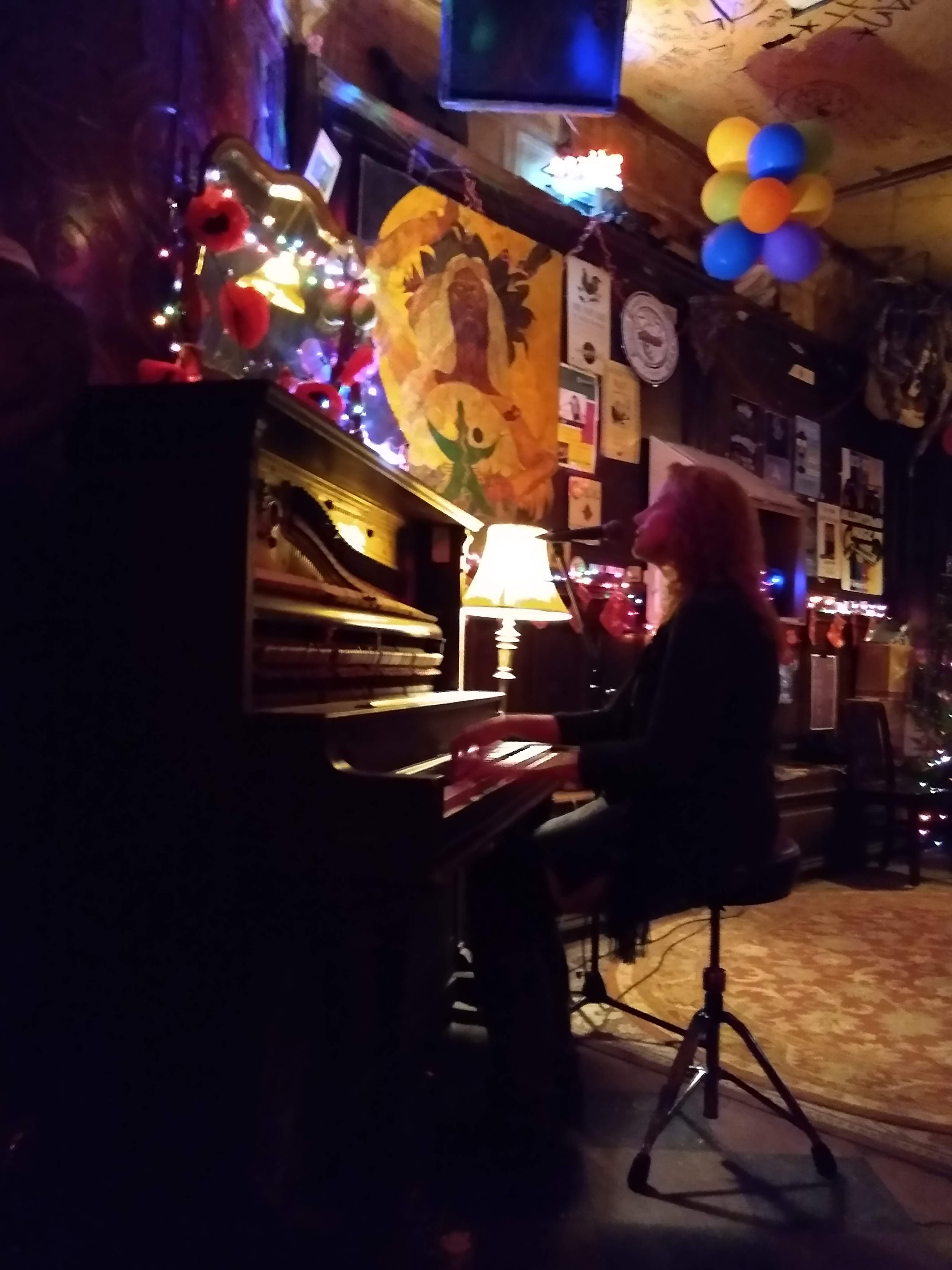Owl Light Outings-Overnight in Buffalo
- By D.E. Bentley
As the second largest city in the state of New York, Buffalo has seen its share of problems. My earliest perception came from my students, juvenile offenders who had found their way from its streets to juvenile lock up. My direct knowledge of the Buffalo area consists of day trip family visits made during the past five or so years (my life partner is a Buffalo native—and makes impressive Buffalo chicken wings) and a Grateful Dead, Dylan, and Tom Petty and the Heartbreakers concert at Orchard Park in the 1980s. Changes, including projects like the Buffalo River Habitat Restoration Project, completed in 2018, which restored 20 acres of land for wildlife, and human recreation—including two miles along the heavily industrialized riverfront, are gradually altering the City scape. Likewise, my having more opportunities to visit and get to know different parts of the city is gradually altering my early perceptions.
For me, a turning point came earlier this year (2020). We had a scheduled pick up of a Canadian-made lumber mill and decide to settle in for an overnight and spend a little more time in Buffalo.

Our visit started with a scheduled tour of Frank Lloyd Wright’s Martin House Complex (125 Jewett Parkway, Buffalo). Usually not one for guided tours (the only option for viewing this meticulously and authentically restored historic structure) it turned out to be an enlightening and informative travel into the past. Our docent was extremely knowledgeable, and the curated exhibit at the entry point offers an abundance of background, in text and images, for anyone looking to learn more related to the construction of the complex and its inhabitants, as well as the architect. We took the two hour tour, which explored the main Martin House, the pergola, conservatory, and the carriage house, the first and second floor of the Barton House (1903, the first Prairie house built on the site), along with the first floor of the Gardener’s Cottage (1909, Wright’s concept for affordable housing). The restoration and accompanying educational area and gift shop—restoration started in 1996 and continued into 2019—is quite impressive. Especially considering that an entire section—torn down and replaced with multi-story apartments—was fully reconstructed on the original footprint, utilizing the original drawings and specifications of the Wright-designed Pergola, Conservatory, and Carriage House. We had previously visited Frank Lloyd Wright’s Graycliff Estate (built between 1926 and 1931 in Derby NY, twenty minutes south of Buffalo) which is currently being restored by the Graycliff Conservancy. It was exciting to see the Martin Complex homes fully restored, and to know that these area architectural legacies are being preserved and shared.
To fill some clock space between the tour and hotel check in, we stopped into Thin Man Brewery (Elmwood Avenue, Buffalo). I started with “Stranded in Brussels,” a Belgium pale ale with American and European hops. My partner, Todd, started with “Burning Money,” a NEIPA with pine and tropical fruit flavors. He followed up with “Speaking Wookie,” a DDH American wild ale style. I followed with “Diplomatic Immunity”—another of their creatively named and crafted NEIPAs, with Simcoe and Mosaic hops and a high bitterness (which I like). We paired the drinks with Buffalo chicken wings (of course) and an asiago Caesar salad.
A light snow had accumulated on the ground as we pulled up at Hotel Henry Urban Resort Conference Center to check in. Opened in 2017, Hotel Henry (corner of Rockwell Road and Richardson Road, Buffalo) is not your usual hotel fare. It is housed in a Medina Sandstone structure constructed in 1880 as the Buffalo State Asylum for the Insane—which was, at that time, a state-of-the-art psychiatric treatment facility. The structure with its 185 feet tall Romanesque towers was designed by Henry Hobson Richardson and landscaped by Frederick Law Olmsted (who also landscaped Central Park in NYC and numerous parks in the Buffalo area). It was designed with a central administration building flanked by patient wards in a V-formation (Kirkbride’s system-named for the physician that developed it) to classify and group patients. Residents’ rooms were designed to be airy and bright, with a home like atmosphere. This, along with the park-like grounds, was thought to be therapeutic. The complex also had vocational areas and a 100-acre farm (now Buffalo State), where residents worked to stay occupied, another part of the therapeutic process. The goal was to heal rather than house. The facility housed and treated psychiatric patients until 1970, when the last patients were transferred elsewhere. The Richardson Olmstead Campus entered a lengthy period of abandonment and decline, despite recognition of its historic significance (in 1973 the campus was placed on the National Register of Historic Places; in 1986 it was designated as a National Historic Landmark).

After checking in, we ventured out again and landed at Nietzsche’s (248 Allen Street, Buffalo). Nietzsche’s slogan is, “Life without music would be a mistake.” They live up to it, with live music every night, year-round, including Buffalo’s longest running open mic on Monday nights. We were lucky enough to happen in on a night when Nietzsche’s house pianist, Ann Philippone, was settling in for her Sunday Piano Party—a couple hours of piano tunes—of her choosing and requests shouted out by the patrons. Ms. Philippone’s repertoire was varied, including classics from Camille Howard and Joni Mitchell, along with rousing renditions of Elton’s “Bennie and the Jets” and Fats Waller’s “Ain’t Misbehavin’.” Ms. Philippone likes to collaborate, and she invited some friends in music to gather around, and take over, the keyboard. We had felt Philippone’s magic previously, when she joined Joe Beard and Bruce Katz on stage, at Fanatics in summer 2018. She didn’t remember us from back then, but that didn’t stop her from stepping up to the bar during a break to introduce herself and say hello to the new faces in the crowd. The hometown feeling and nightly musical offerings makes Nietzsche’s the kind of place that, if I lived up the street, I would frequent regularly. There is nothing contrived about the atmosphere; it is just life lived accumulating (on the walls and ceiling, in the air, and on every horizontal surface) layer by layer, since its inception in 1982. This layering of the past seemed to be present in everything we did during are brief Buffalo stay, and I was beginning to really like the place.

As we were heading out, we mentioned to Ann that we had booked a room at Hotel Henry, and she alluded to ghost stories, of past patients who haunted, perhaps, the hotel’s hallways. The only spirits we encountered when we returned to our welcoming room later that evening was in the form of living, breathing, friendly and courteous staff. Every aspect of our stay, from pre-check in to a breakfast of locally sourced foods the following morning, was delightful. The space has been creatively updated, while maintaining the historical essence of the past. The two side walls of the original main entryway have been enclosed with a glass front, and stairs leading up to the bar and restaurant area. The hotel check in desk is up another set of stairs (which took us a moment to find, allowing us time to acclimate). Our room was simple and comfortable, with modern fixtures integrated into the historic structure’s tall ceilings and windows. We explored a bit after breakfast. An art gallery area (soon to be a planned architectural center) caught our attention, and we took some time to check out the photo exhibit featuring photos by Michael Lee Jackson. Promoting regional artists and art is part of the core mission being carried out by the Richardson Olmsted Corporation—the designated rehabilitation agency. In addition to the gallery space, there were also art exhibits in hallways throughout the facility. As we were leaving, we spoke with members of a group setting up for an art workshop in one of the large gathering areas between hallways. In another hall, a new exhibit was going up.
There is still so much work to be done, even in this opened section of the expansive campus. Fundraising is currently underway to repair and replace sections of decorative tile floors. Meanwhile, on either side of the hotel there are large wings still abandoned and waiting, ghostlike, to be brought back to life.
We had already packed much into a brief overnight stay, and there was still that mill to be picked up. After loading and pick up at the warehouse was completed, we headed to lunch before heading home. We were accompanied by Todd’s father, Paul, a lifelong Buffalo resident. This visit—one of many area meals we have enjoyed with Paul—we ate at the Polish Villa, 2954 Union Road, Buffalo. This was my first visit, but they had often eaten there in the past (Paul’s wife, Alice, was Polish). Visits with relatives are our primary reason for traveling to Buffalo these days, and we do not get out that way nearly often enough. Although I always enjoy the time shared, this was the first visit where I started getting a sense of and enjoying the place—and a feeling that I was less a visitor and more part of the area. This overnight trip offered me added incentive for future extended visits and further adventures in Buffalo, NY.
See www.owllightnews.com/owl-light-outing-a-place-transformed/ for additional images of the Richardson Olmstead Campus.